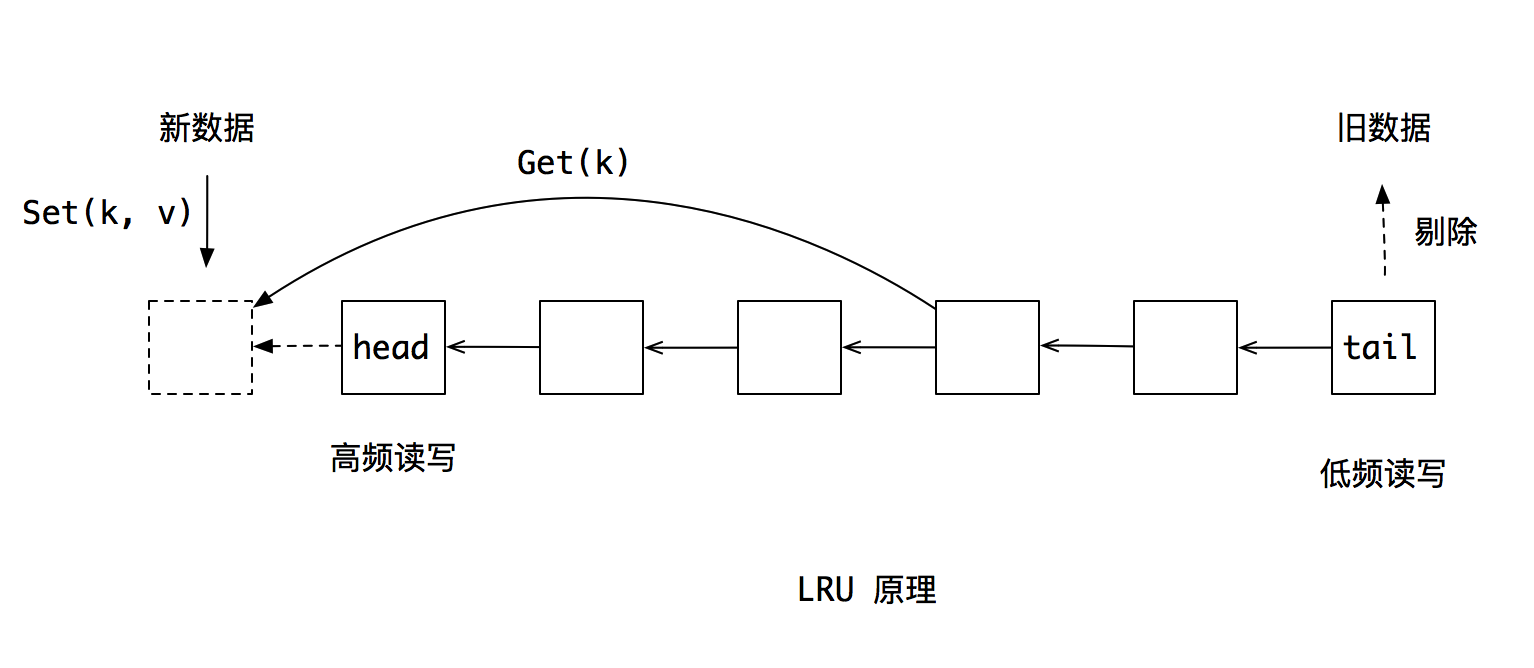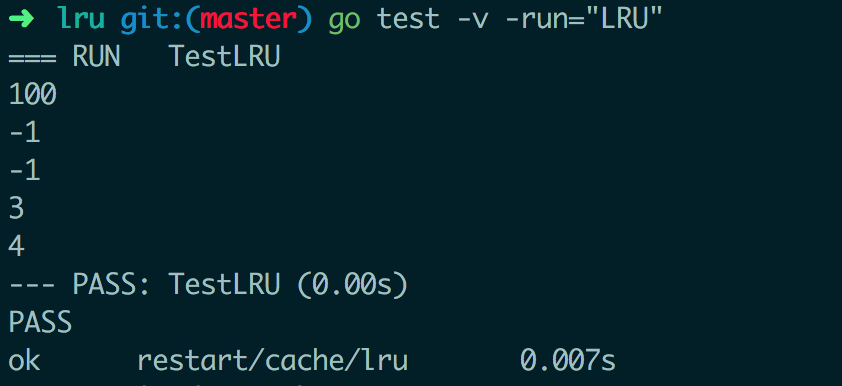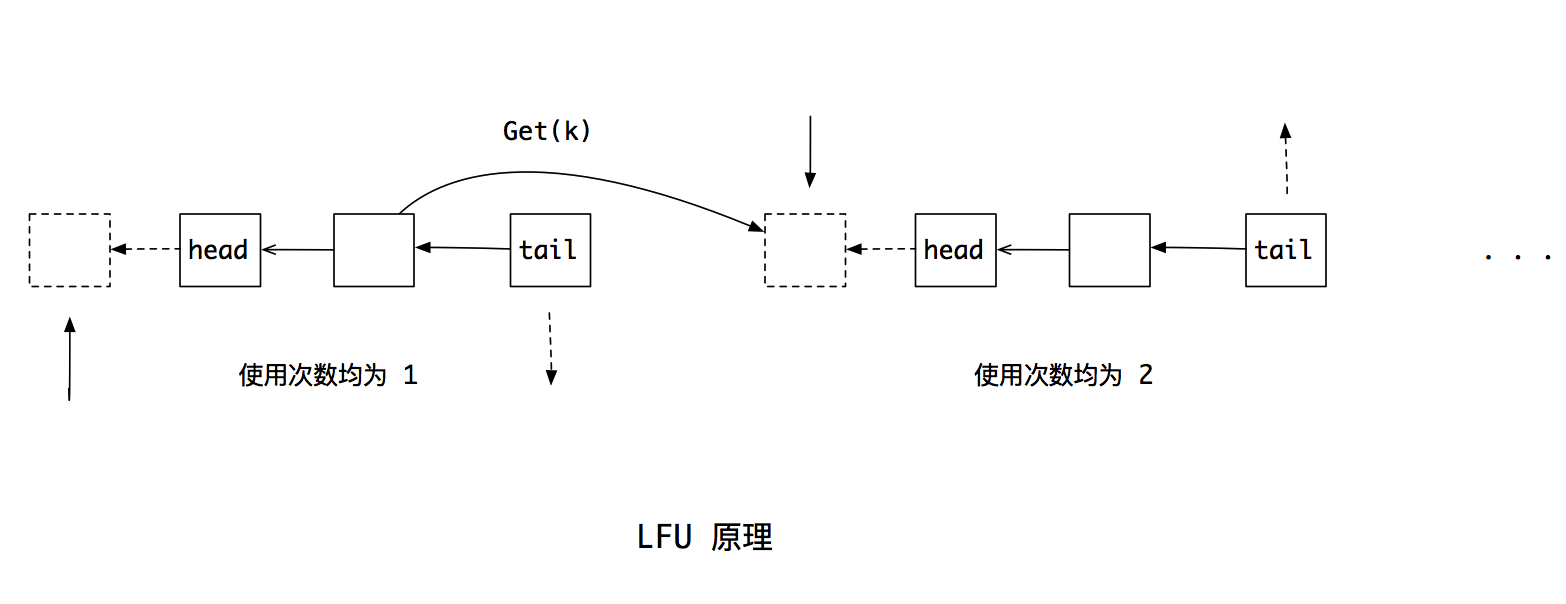LRU 与 LFU 缓存策略及其实现。
应用层缓存

鉴于磁盘和内存读写的差异性,DB 中低频写、高频读的数据适合放入内存中,直接供应用层读写。在项目中读取用户资料时就使用到了 LRU,而非放到 Redis 中。
缓存的 2 个基本实现
1 | Set(key string, value interface) // 写数据 |
缓存的 2 个特征
- 命中率:即命中数 / 请求数,比值越高即表明缓存使用率越高,缓存更有效。
- 淘汰策略:内存空间是有限的,当缓存数据占满内存后,若要缓存新数据,则必须淘汰一部分旧数据。对于旧 的概念,不同淘汰策略有不同原则。
下边介绍两种常用的淘汰算法:LRU 与 LFU
LRU
缩写:Least Recently Used( 最近 最久 使用),时间维度
原则:若数据在最近一段时间内都未使用(读取或更新),则以后使用几率也很低,应被淘汰。
数据结构
- 使用链表:由于缓存读写删都是高频操作,考虑使用写删都为 O(1) 的链表,而非写删都为 O(N) 的数组。
- 使用双链表:选用删除操作为 O(1) 的双链表而非删除为 O(N) 的单链表。
- 维护额外哈希表:链表查找必须遍历 O(N) 读取,可在缓存中维护
map[key]*Node的哈希表来实现 O(1) 的链表查找。

直接使用链表节点存储缓存的 K-V 数据,链表从 head 到 tail 使用频率逐步降低。新访问数据不断追加到 head 前边,旧数据不断从 tail 剔除。LRU 使用链表顺序性保证了热数据在 head,冷数据在 tail。
双链表节点存储 K-V 数据:
1 | type Node struct { |
从上图可知,双链表需实现缓存节点新增 Prepend,剔除 Remove 操作:
1 | func (l *List) Prepend(node *Node) *Node { |
LRU 操作细节
Set(k, v)
- 数据已缓存,则更新值,挪到 head 前
- 数据未缓存
- 缓存空间未满:直接挪到 head 前
- 缓存空间已满:移除 tail 并将新数据挪到 head 前
Get(k)
- 命中:节点挪到 head 前,并返回 value
- 未命中:返回 -1
代码实现:
1 | type LRUCache struct { |
测试
1 | func TestLRU(t *testing.T) { |

LFU
缩写:Least Frequently Used(最近 最少 使用),频率维度。
原则:若数据在最近一段时间内使用次数少,则以后使用几率也很低,应被淘汰。
对比 LRU,若缓存空间为 3 个数据量:
1 | Set("2", 2) |
数据结构
依旧使用双向链表实现高效写删操作,但 LFU 淘汰原则是 使用次数,数据节点在链表中的位置与之无关。可按使用次数划分 频率梯队,数据节点使用一次就挪到高频梯队。此外维护 minFreq 表示最低梯队,维护 2 个哈希表:
map[freq]*List各频率及其链表map[key]*Node实现数据节点的 O(1) 读

双链表存储缓存数据:
1 | type Node struct { |
LFU 操作细节
Set(k, v)
- 数据已缓存,则更新值,挪到下一梯队
- 数据未缓存
- 缓存空间未满:直接挪到第 1 梯队
- 缓存空间已满:移除 minFreq 梯队的 tail 节点,并将新数据挪到第 1 梯队
Get(k)
- 命中:节点挪到下一梯队,并返回 value
- 未命中:返回 -1
如上的 5 种 case,都要维护好对 minFreq 和 2 个哈希表的读写。
代码实现:
1 | type LFUCache struct { |
minFreq 和 2 个哈希表的维护使 LFU 比 LRU 更难实现。
测试
1 | func TestLFU(t *testing.T) { |

总结
常见的缓存淘汰策略有队列直接实现的 FIFO,双链表实现的 LFU 与 LRU,此外还有扩展的 2LRU 与 ARC 等算法,它们的实现不依赖于任意一种数据结构,此外对于旧数据的衡量原则不同,淘汰策略也不一样。
在算法直接实现难度较大的情况下,不妨采用空间换时间,或时间换空间的策略来间接实现。要充分利用各种数据结构的优点并互补,比如链表加哈希表就实现了任意操作 O(1) 复杂度的复合数据结构。
